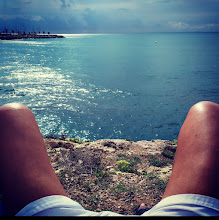miércoles, 1 de enero de 2025
ISAAC GRÜNEWALD 1889-1946 Stockholm
Isaac Grünewald (2 September 1889 – 22 May 1946) was a Swedish-Jewish expressionist painter born in Stockholm. He was the leading and central name in the first generation of Swedish modernists from 1910 up until his death in 1946, in other words during almost his entire career spanning four decades. He was a highly productive painter as well as a writer and public speaker.
Having studied at an influential Swedish art school for three years, at age 19 Grünewald travelled with his friends Einar Jolin and Einar Nerman to Paris where they soon began studies at Henri Matisse's academy. In 1909 he gained recognition in his homeland when he exhibited his work with a group of Scandinavian artists known as The Young Ones.
He met his future wife Sigrid Hjertén in 1909 and encouraged her to study painting with him in Paris. Having married in 1911, Grünewald and Hjertén from 1912 on regularly exhibited together at home and abroad. Art historians nowadays often cite them as being responsible for introducing modernism to Sweden. At a time in history when antisemitism was both widespread and politically correct and women artists were frowned upon, their works were often the subject of ridicule in the press. In fact, recent research has shown that Grünewald who became the center of public controversy numerous times was the primary target of antisemitism in the Swedish press between 1910 and 1926.[1]
Despite or because of his role as the leading and most controversial pioneer in Swedish modernism in his days, in Swedish journalism and literature, he is still sometimes being portrayed as, in effect, the embodiment of a classic Jewish caricature, with insinuations of his not having earned his success fairly; being an insignificant Matisse imitator as an artist but a genius as a businessman.
In the 1920s, Grünewald began reaping major commercial successes. He created stage designs for the Royal Swedish Opera[2] and other theaters. In 1925-26, he decorated the walls and ceiling in the minor hall (since renamed Grünewald Hall) at the Stockholm Concert Hall, site of the Nobel Prize ceremony, and in 1928 the walls of the Matchstick Palace. His work was part of the painting event in the art competition at the 1932 Summer Olympics.[3]
Grünewald was a professor at the Royal Swedish Academy of Arts between 1932 and 1942 and in 1941 he opened his own art school (Emil Clahr student). During the Second World War Grünewald worked at the renowned Rörstrand porcelain factory. He was awarded the Prince Eugen Medal in 1945.[4]
His wife Sigrid Hjertén suffered from lifelong mental health problems that resulted in her being hospitalized for extended periods in the 1930s. Grünewald divorced Hjertén, who was then hospitalized permanently, in 1937 and remarried. In 1946 he and his second wife Märta Grundell were killed in an airplane crash.[3] Grünewald was the father of three sons born in 1910, 1911 and 1940.
The author of numerous essays on art, during his influential 1918 exhibit at Stockholm's Liljevalchs Konsthall Isaac Grünewald published his manifesto The New Renaissance
www.aglutinart.blogspot.com
.
Suscribirse a:
Enviar comentarios (Atom)
BARON LASZLO MEDNYÁNSZKY 1852-1919 Beckov, Slovakia
László Mednyánszky (23 de abril de 1852 – 17 de abril de 1919) fue un pintor impresionista húngaro. Nació en Beckó en el Reino de Hungría ...

-
“THE UNBEARABLE INDIFFERENCE” BY MIGUEL TADEO, NEW LGTBIQ EXHIBITION OF TRANSSEXUALIA IN CASA DE VACAS TRANSEXUALIA.ORG • JUNE 28, 2024 •...
-
Mario Moore, a Detroit native, received a BFA from the College for Creative Studies, Detroit, MI in 2009 and an MFA in Painting from the ...
-
weyrhere - weyrq nsfw X https://twitter.com › weyrhere Art! This is the NSFW account. I use AI tools and digital painting, no images ar...
























































No hay comentarios:
Publicar un comentario